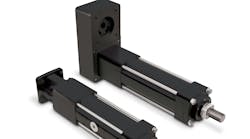H&P Insights: Electromechanical Resource Center; Find Hidden Money in Old Machines
H&P Insights is a new column recapping some of the trends and highlights from Hydraulics & Pneumatics editors.
Electromechanical Resource Center
The Electrical Apparatus Service Association (EASA) has opened its online portal to provide design and operations teams with a resource platform for the most fundamental machine in most operations: the electric motor.
The Electromechanical Resource Center offers tips on everything from basic motor system considerations to vibration analysis, motor foundations and electrical connections. “Your electromechanical equipment keeps your systems working. With proper maintenance and care, you can obtain the longest, most efficient and cost-effective operation from general and definite purpose electric motors,” EASA officials said in introducing the Resource Center.
Motor efficiency can get overlooked, and often gets delayed because of the vital role the motor plays in your entire operation. The EASA resource center is a good reminder that delaying maintenance isn’t a cost-effective strategy.
Find Hidden Money in Old Machines
While some might argue the last thing we need is more data, connecting legacy equipment to this data stream may actually be more valuable than with newer machines, notes Adam Justice, CEO of Grid Connect Inc. in a recent article from our sister brand, Machine Design.
By connecting older machines, you get an as-operating look at machine health, and that could help head off potential maintenance issues.
“Data streamed from a legacy machine connected to the cloud might reduce the cost of supplies or lead to better maintenance. Real-time data could reduce downtime or eliminate trips to remote locations,” Justice said. “Making legacy machines internet-ready could save machine owner energy (and money) by turning power on and off as needed, rather than having the machine run constantly.”
Every machine needs to be monitored, of course, but as we all know as humans, the older the machine is, the more likely it is to break down.

